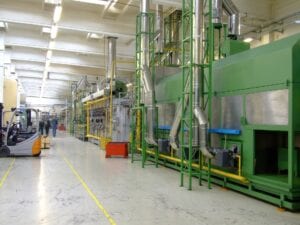
Image Pixabay CC0 License
A productive workforce is essential for all businesses, but in the manufacturing industry, your employee’s output matters more than most. To be a success, manufacturing businesses need to fulfil orders on time, every time, without compromising on the quality of their products.
When you are dealing with large volumes of products being manufactured each day, any lapses in productivity could threaten the production process, resulting in orders being delayed. Keeping your workforce working as productively as possible is a challenge that many business owners face. This can be a difficult situation to deal with, but, a dip in workplace productivity is something that needs to be addressed before it escalates into a more significant issue. Once production begins to fall behind, it can be almost impossible to catch up, resulting in further orders being delayed, and delivered late to your clients. Failure to deliver orders on time can damage your company’s reputation, and you may lose clients all together if orders are continually delivered late.
The current uncertain financial climate is increasingly difficult for businesses. In these challenging times, competition for the best contracts is fierce, as companies battle it out to secure work for the future. Increasing the productivity of your workforce is vital to keeping your existing customers happy, as well as securing lucrative contracts in the future. While it is easy to understand why high levels of productivity are so crucial to your business, it is far more challenging to know the best way to tackle issues relating to productivity. Here are some suggestions to help you improve productivity in your business:
Assess Current Productivity Levels
Before you can take action to increase productivity, you firstly need to understand how your business is performing. Measuring output is useful, but you need to break these figures down further to get a real insight into your business’s performance.
Examining each stage of your processes and seeing where delays occur can help you to identify the areas that require further attention. You may find that there are areas of the production process that are unnecessarily time-consuming or where effort is being duplicated. Examining your processes in detail will give you a thorough understanding of how you can use your resources in the most efficient way possible.
The Right Equipment for The Job
When productivity levels are low, many companies instantly attribute blame to their employees. However, it is crucial to make sure that your equipment is not harming productivity. If your employees do not have the right equipment to perform their job, productivity will never be sufficiently improved.
If your current equipment is causing efficiency issues, then you may want to consider investing in new process equipment. Seeking the services of a company that offers Custom Stainless Steel Fabrication is an excellent way to get process equipment that exactly matches the needs of your business, which can help to improve productivity in your factory significantly.
Positive Work Environment
A positive work environment and increased productivity go hand in hand. When employees feel valued and are rewarded for their efforts, they are more likely to work harder. In workplaces where employees feel undervalued, and there is a negative workplace culture, productivity levels are likely to be lower. This is because employees will think that whether they perform their job well, or not makes no difference as their efforts are not appreciated either way.
Creating a positive environment for your employees will encourage them to take pride in their work, and to work to their full potential.
Thorough Training Program
Inadequate training can seriously harm workplace productivity. If employees are not trained on how to do their jobs correctly in the first place, their productivity levels will be compromised, as will the quality of the work they produce.
Ensuring that you have a robust training program in place which gives employees a thorough induction to the workplace and specific training on how to do their jobs is crucial. When employees have the knowledge that they need to perform their role, they are far more likely to work faster and to make fewer mistakes.
Ongoing training is also vital for employees to refresh their existing skills and knowledge and to develop new skills.
Summary
Increasing workplace productivity is essential to the success of any manufacturing business. Achieving increased productivity initially requires assessing your existing processes to identify improvements. To increase productivity in the long term, a combination of the right equipment, training, and creating a positive work environment for your employees is vital.
